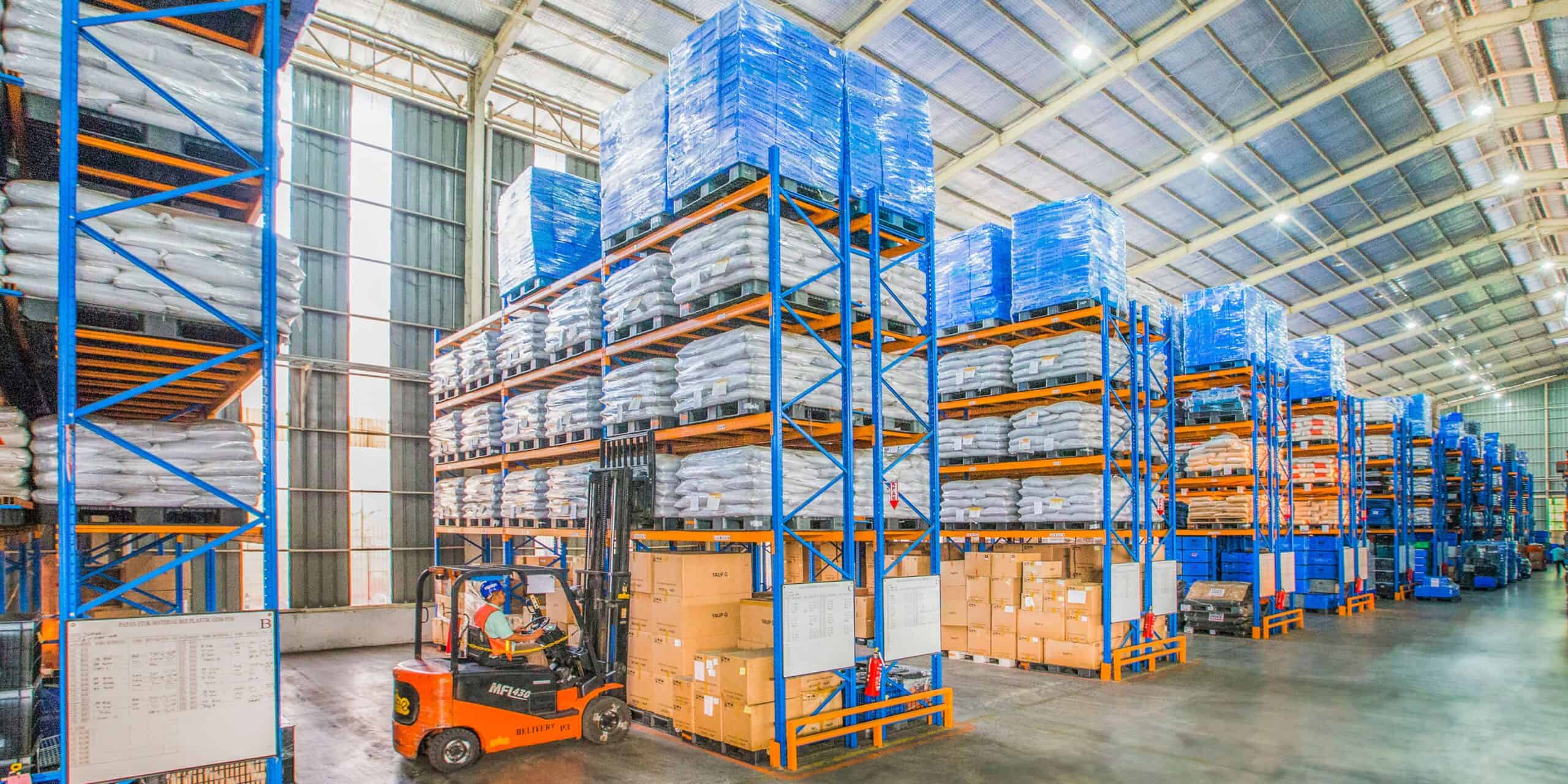In a perfect world, businesses could sell their products directly to customers the second they’re produced. Unfortunately, customer demand doesn’t work that way. So, where do goods go while they’re waiting to be sold or distributed?
Warehousing is the step in the supply chain where goods are safely stored while waiting to be ordered. Warehousing occurs in a storage facility called a warehouse, where inventory is highly organized. Efficient warehouse operations ensure products are easy to track down, so businesses know how many items there are and how long they have been there.
Learn more about the vital role of warehousing and fulfillment logistics in the supply chain and how it affects your business.
How does warehousing work?
Warehousing is an essential component of fulfillment logistics, where products are stored safely and organized until they are requested for outbound shipping.
Depending on the product type and business needs, there are different types of warehousing. Warehousing is essential for companies needing inventory storage until their products are shipped to customers or retailers.
6 Types of warehousing solutions
Depending on the type of goods and efficient storage methods, there are a few types of warehousing.
Distribution centers
Any type of warehouse specializing in fulfilling orders is considered a distribution center. Rather than purely storing goods, a distribution center is designed for shipping goods efficiently.
Pick pack and ship warehouse
A distribution center optimized for fulfilling online orders. A pick, pack, and ship warehouse is also called a shipping warehouse.
Cold storage
A cold storage warehouse is a temperature-controlled warehouse for perishable goods such as food or medical supplies.
Smart warehouse
A warehouse that primarily uses technology rather than humans to receive products and ship orders. Smart warehouses typically use robot carts to pick items based on an automatically received pick sheet, reducing human interaction.
Bonded warehouse
A customs-controlled warehouse for imported goods is called a bonded warehouse. While private companies operate bonded warehouses, they are under the regulatory supervision of the receiving country’s customs agency.
On-demand storage
A flexible warehousing solution that allows companies to pay only for the warehouse space and services they need. On-demand storage warehousing enables businesses to use warehouse space temporarily and for warehouses to fill extra space.
What is the importance of warehousing?
Warehousing is an essential type of inventory storage that optimizes the distribution of goods. Companies need to have stock ready to send as soon as orders are received, so they rely on ample storage space and efficient processing of orders in warehousing.
What Is the main purpose of a warehouse?
A warehouse’s primary purpose is to serve as inventory storage until there is a demand for the products. When a business is just starting, it may have plenty of space in the founder’s garage or its office space for physical inventory. However, as businesses grow and demand rides for their products, more space is necessary, and effective organization techniques are needed to locate products quickly.
Elements of warehousing
Inventory storage is just one aspect of warehousing. To effectively manage goods and optimize fulfillment, goods move through the warehousing cycle, which includes capacity planning, receiving inbound shipments, inventory tracking, storing products, reorganizing warehouse space, climate control, and managing outbound shipments.
Capacity planning
In warehousing, the efficient use of space is essential. Pre-planning for the arrival of goods ensures the best use of available space. The capacity planning stage consists of a space optimization strategy and physical reorganization of goods as they move through the warehouse.
Receiving shipments
As soon as shipments arrive at the warehouse, employees need to move them to the staging area, where they can be checked in and processed. Therefore, effectively managing these inbound shipments is essential for finding them in the future.
Inventory tracking
Warehouses are massive, and without proper inventory management, it would be easy to lose products. Therefore, inventory tracing is vital for keeping track of inventory and future planning. Most modern warehouses use inventory management software to keep track of products and optimize the entire warehousing process.
Storing product
Until products are requested for outbound shipping, they must be securely stored in the warehouse. Depending on the type of goods, products are placed into storage bins or pallets and stored appropriately.
Reorganzing warehouse
Since efficient storage of goods is the main goal of warehousing, reorganization may be necessary to make room for new products. Product tracking information must be updated when changes are made to ensure that the warehouse can still locate the goods.
Climate control
Warehouses must store goods susceptible to spoiling in an appropriate temperature-controlled environment. Therefore, climate-controlled is necessary for refrigerated and frozen food items and some medical products. By maintaining proper temperature, companies can ensure quality.
Outbound shipments
Finally, when customers request products in the warehouse, they are located, retrieved, processed, packaged, and shipped to their destination. The warehousing process continues using the newly created space for subsequent inbound shipments.
Effects of warehousing on supply chain
Companies heavily rely on warehousing for storing goods and overall optimization of their supply chains. Having the right products in the right place at the right time is an essential aspect of modern business, and strategically located warehouses help insure this uninterrupted flow of goods that consumers demand. Also, by utilizing warehouses, businesses can reduce logistics costs, shorten shipping times, and prepare products for last-mile delivery.
Warehousing vs. Distribution centers
Distribution centers are a specialized type of warehouse that, besides storing products, offer other value-added services such as order fulfillment and packaging. Typically, goods pass through distribution centers more quickly than traditional warehouses.
Retail warehousing strategies combined with specialized distribution centers in fast-paced consumer goods industries provide effective inventory management and the best customer experience.
Improving fulfillment logistics through warehousing
Warehousing might be the right solution if you’re looking for product storage and your company’s supply chain optimization. With almost every industry relying on warehousing for efficient goods storage and organization, you can be confident that your inventory is in good hands.
FAQ
Warehousing logistics is the process of planning, organizing, and managing the flow of goods in and out of a warehouse.
Distribution centers focus on moving goods quickly to customers, while warehouses focus on storing goods for longer periods of time.
Owning a warehouse can give you complete control, flexibility, investment opportunities, and tax benefits.
Owning a warehouse can be a costly and time-consuming endeavor, with significant risks involved.


